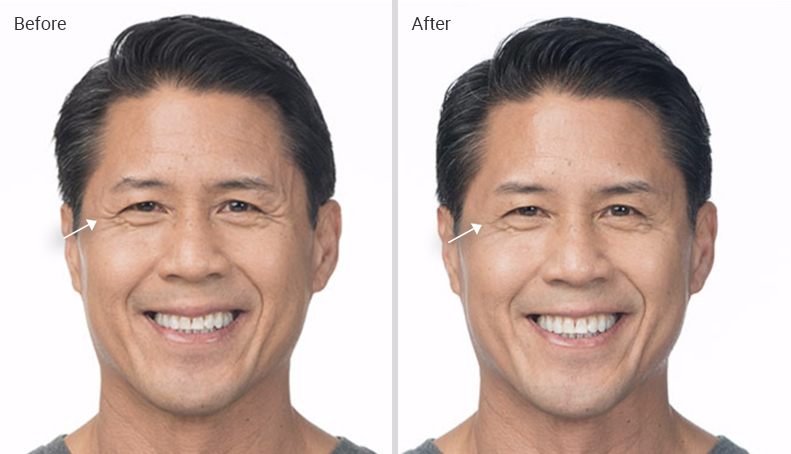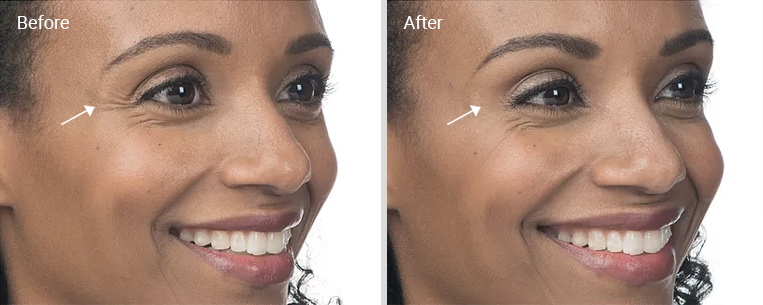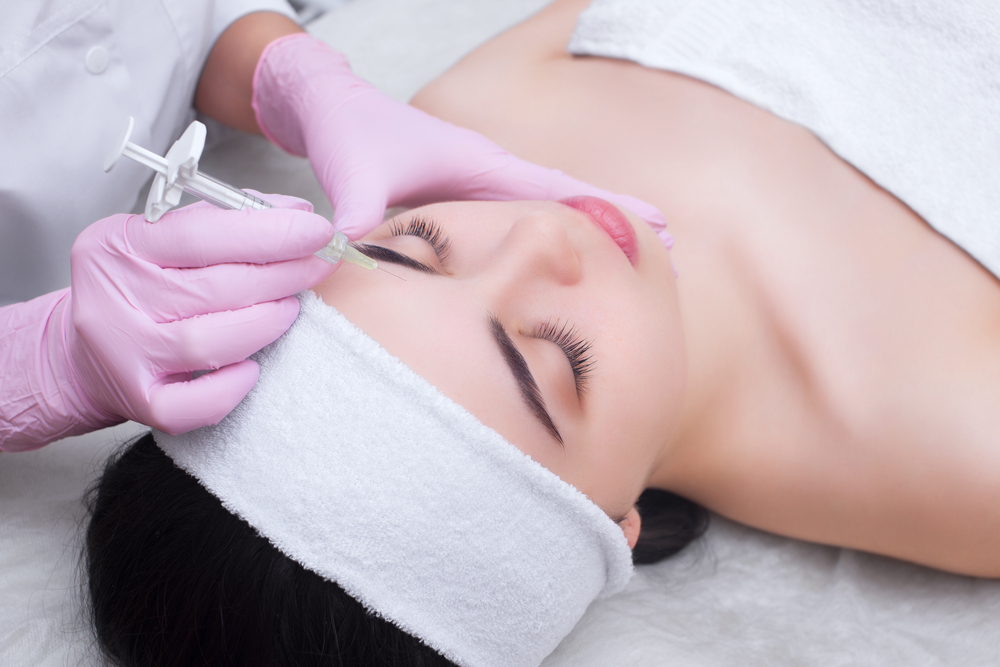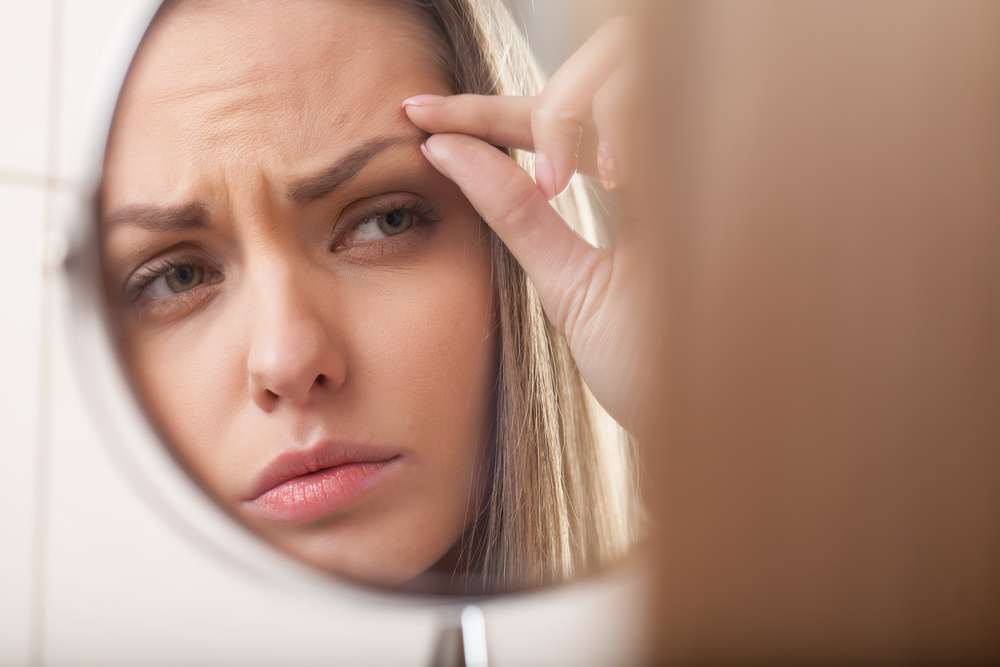- Botox and dermal fillers can both be used to treat wrinkles, but the way they work is very different.
- Botox is generally used to treat dynamic wrinkles, while fillers are more effective for static wrinkles.
- Fillers tend to last longer than Botox, but are usually more expensive.
Botox and dermal fillers are non-invasive cosmetic procedures that can be used to reduce the appearance of wrinkles and combat the signs of aging.
While the two treatments do share a number of similarities, they serve quite different purposes. As a patient, it’s important to understand the differences between the two in order to get the best results.
Differences in Purpose
Botox numbs muscles
Botox is a purified form of botulinum toxin. It has a long history of use in the United States and is most commonly used to treat wrinkles and fine lines. Botox works by temporarily paralyzing the underlying facial muscles that cause dynamic wrinkles.
Fillers add volume
Dermal fillers can also be used to treat wrinkles. A dermal filler is a substance that is injected under the skin to temporarily add facial volume, effectively filling in wrinkles and creases and smoothing out the skin. There are a few different types of substances used in dermal fillers, with hyaluronic acid being the most popular.
Differences in Usage
Botox and fillers are both effective anti-wrinkle treatments, but there are some key differences in the way they are used.
Botox
Botox is primarily used to treat the appearance of facial wrinkles and has been FDA-approved for use in the treatment of:
- Moderate to severe forehead lines.
- Moderate to severe crow’s feet.
- Moderate to severe frown lines between the eyebrows.
It’s important to note that Botox is best suited to address dynamic wrinkles (wrinkles caused by muscle contractions) rather than static wrinkles, which are the result of fat and collagen loss and usually present regardless of whether the surrounding muscles are activated.
Fillers
Dermal fillers are not only used to diminish the appearance of wrinkles and facial folds. They can also be used to address a wide range of cosmetic concerns, including:
- Adding volume to sunken cheeks.
- Creating more voluminous lips.
- Filling in static wrinkles.
- Filling in deep acne scars.
Before and afters





How to Choose Between Botox and Fillers
As a general rule of thumb, Botox is the best option for dynamic wrinkles, while fillers typically provide better results for static wrinkles and volume loss.
Refer to the following table for more information:
| Treatment area | Best treatment | Why? |
|---|---|---|
| Horizontal forehead lines | Botox | Forehead lines are usually caused by activity in the frontalis muscle, which controls your eyebrows. Botox injections help relax this muscle and reduce dynamic wrinkles. |
| Lips | Fillers | Wrinkles in the lips are the result of the volume loss associated with aging. Dermal fillers help replace this lost volume and fill in the fine lines that form on and around the lips. |
| Crow’s feet | Botox | Crow’s feet are the wrinkles in the corners of your eyes that form when you smile. Botox can be used to inhibit muscle activity in this area and smooth out the lines. |
| Frown lines between the eyebrows | Botox | Botox is injected into the corrugator muscles (the small, pyramid-shaped muscles close to the eye) and the procerus muscle (the muscle that pulls the skin between your eyebrows down) to prevent muscle activity and reduce the appearance of wrinkles. |
| Wrinkles that are present when your face is at rest | Fillers | As you get older, you may start seeing wrinkles and fine lines that are present even when you’re not making a facial expression. Fillers can help fill in these creases and keep your skin looking smooth and youthful. |
Do note that your exact treatment plan will depend on your unique facial anatomy. In many cases, cosmetic providers will recommend using a combination of Botox and fillers to get the best results.
Risks and Side Effects
Botox and dermal fillers are widely considered to be very safe. They are both minimally invasive procedures that require little recovery time.
However, as with any cosmetic procedure, there are still some risks to be aware of.
Botox side effects
Botox side effects are most commonly caused by poor injection technique. They include:
- Bruising near the injection site.
- Droopy eyelid.
- Dry mouth.
- Headache.
- Dry, red or irritated eyes.
Fillers side effects
Most side effects associated with dermal fillers are mild and tend to resolve themselves within a few days. Common side effects include:
- Bruising, pain and tenderness near the injection site.
- Discoloration.
- Itching.
- Lumps or asymmetry.
- Skin damage.
How Long Do the Results Last?
Botox
Botox provides temporary results. Over time, Botox is metabolized by the body and new nerve endings form that have not been affected by the Botox. This allows your muscles to start contracting again, which means dynamic wrinkles will start appearing again.
Most patients find that the results of Botox last for roughly three to six months. Research published in the American Journal of Clinical Dermatology found the effects of Botox lasted for approximately three to five months in female patients and four to six months in male patients.
You can repeat the treatment once the effects start to wear off if you wish to maintain results. Some studies suggest that Botox may last longer with repeated treatments.
Unlike dermal fillers, there is no way to remove or dissolve Botox. If you’re unhappy with the results of your treatment, you simply have to wait for the effects to fade away. In some cases, your provider may recommend additional Botox injections to improve results.
Fillers
Dermal fillers tend to last longer than Botox. The duration of effect can vary significantly depending on the brand used and the location of the injection site. For example, dermal fillers might last for up to two years when used to add volume to the cheeks, but only six months when injected into the lips.
One advantage of dermal fillers is that some types are reversible. For instance, hyaluronic acid-based dermal fillers can be safely dissolved with hyaluronidase injections. This makes it a great option for first-time patients who want the reassurance of being able to undo the treatment should they not like the results.
Differences in Cost
The cost of Botox and fillers depends on how much of the product is required and the location of your provider. Generally speaking, cosmetic treatments are more expensive in areas with a higher cost of living.
Dermal fillers are more expensive than Botox, but the results tend to last longer.
Botox
| Treatment area | Cost |
|---|---|
| Forehead lines | $300-$400 |
| Crow’s feet | $200-$300 |
| Frown lines between the eyebrows | $250-$350 |
Fillers
| Treatment area | Cost |
|---|---|
| Cheeks | $800-$1,000 per cheek |
| Lips | $500-$800 |
| Nasolabial folds | $500-$750 |
Takeaway
Botox and fillers are powerful anti-aging treatments that help patients achieve a more youthful appearance.
Each product serves a different purpose. Botox works by paralyzing facial muscles and reducing the dynamic wrinkles that form when you make facial expressions, whereas dermal fillers treat wrinkles by filling in lost volume and creating smoother skin.
Both products are considered to be very safe. Fillers cost most than Botox but provide longer lasting results.
Botox and Filler Providers Near Me
To get the best results and reduce the risk of any adverse side effects occurring, it’s important to only use the services of a reputable Botox or dermal filler provider. Meet our Medical Review Team to know more about Botox and fillers that could hlep you take a wise decision.









